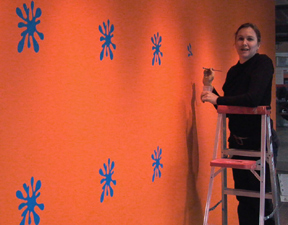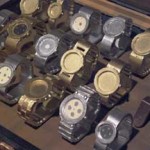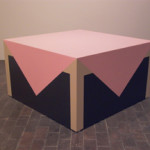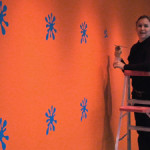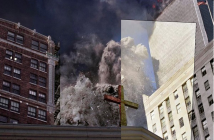The first time I watched Pulp Fiction, the Quentin Tarantino film that changed how many people saw cinema, I was watching a knock-off. At the time, my close friend Jason Dean was living on 42nd Street and the movie had barely hit theatres. On the sidewalks below his apartment men had spread out blankets or opened briefcases full of goods, and whole world of products unavailable anywhere else in the world could be bought for nothing: $4 for movies currently in the theatres; $12 for Rolex watches; $3 for hot new albums. Not everything was a knock-off, but each transaction stank of corruption.
With the unlabeled VHS tape of Pulp Fiction in our hands, Jason and I rushed up the stairs to catch a glimpse of film history. And I must say that it was a memorable experience, although it was marred by fact that the man who had taken his camera to the theatre needed a bathroom break halfway through the film -- an experiece I have had many times myself -- yet his passing of the camera to a buddy distorted the experience for me. It was as if I was thrown from my seat, made aware of the theft happening in front of me, made conscious of my compicity in this robbery. Pulp Fiction was no longer a film, it was a crime, and I was now bound in some sad way to this 42nd Street vendor and his camera.
Viewing Knock Offs at the Green Street Gallery felt a lot like my experience with Pulp Fiction. I was allowed to come in intimate contact with artworks that I may never get to see in their 'genuine' form. This cheapening of my feelings was further exacerbated by the inclusion of Alfredo Conde's 'Rolex, Cheap!' pieces that only reminded me of Times Square in '94 and the overwhelming sense of criminality and complicity I felt while watching Pulp Fiction.
I should confess that I was in the gallery prior to the opening while Denise Kupferschmidt put the finishing touches on the Sol LeWitt wall drawing. Somehow I have always imagined LeWitt wearing white gloves and sitting back, aloof, from the intern creating his pieces. But this was different. Even after having met LeWitt in Chicago and witnessing his hands-on approach to the creation of his work (when he is inspired), watching Kupferschmidt put the pencil to the wall felt incomplete; my knowledge that this was a knock-off permeated the experience of witnessing great art being made.
Then again, a day later (when the show was completed) I wanted only to congratulate Green Street Gallery for a very succesful show. My sense of cheapening had not decreased; on the contrary, my appreciation of the art of the 'knock-off' had increased. I had become obsessed not with the artworks in question, but the artists who had chosen to create them. These 'knock-offs' may be divorced from their original pedigree, but that doesn't mean that Boston and Green Street haven't stamped something new and valuable on the works.
Much of the show features works by Boston artists that re-create known instructional works: Richard Artschwager by Kanishka Raja; John Armleder by Juli Raja; Sol LeWitt by James Hull & Denise Kupferschmidt; Barry McGee by Suzannah Sinclair; Rob Pruitt by Sheila Gallagher; and Rachael Whiteread by Matthew Littel (Utile, Inc.) and Sheila Gallagher. This is an impressive list, to be sure, and not just because of the names of the artists being re-created. Kanishka Raja recently won the ICA prize. Sheila Gallagher, Suzannah Sinclair and James Hull are not names to sneeze at, either.
Buying a knock-off Rolex in Times Square may be a mistake or (at worst) a deliberate self-deception; witnessing Knock Offs is complicity. Acknowleding Kupferschmidt's 'fake' LeWitt or Raja's Artschwager as art requires that we accept that art is in the making, not the conception. The work is an experience unto itself, divorced from the hand that made it, and our enjoyment is not mediated by the fame or the history of the artist whose name is on the gallery label.
Equally as important, recognizing a 'knock-off' as a work of art also requires that we acknowledge the culture of celebrity that permeates the art world and informs our reading of so many works. Museums and galleries thrive on the cache derived from the name recognition of artists. Knock Offs calls into question the value and beauty of artwork when the name-value of the artist is negated.
The only works in the show that are not direct recreations of existing artworks are 'Rolex, Cheap!' by Alfredo Conde. These styrofoam sculptures present briefcases filled with watches, not unlike the street vendors in every city. They are 'knock offs' on several levels: fake versions of briefcases filled with fake watches representing fake watches. Simply: they are knock-offs of knock-offs. In the context of the rest of the show, they seem out of place at first, but i must say that I am glad that they are there. The cheapness of the fake Rolex, further cheapened by re-creation in styrofoam, reminds one that authenticity is power, and the further we get from the 'authentic' item the less value something has. In the context of Knock Offs, Conde's watches sit lower on the value scale than the 'knock-off' artworks and give us a basis from which to define our values. The artworks may be 'fake', but the 'fake fake' watches set the bar so low that we can truly appreciate a LeWitt wall-drawing for what it is: amazing.
- Fake fake Rolexes by Alfredo Conde.
- Richard Artschwager knocked-off by Kanishka Raja.
- Juli Raja creates a knock-off of John Armleder.
Links:
Green Street Gallery
"Knock-Offs" is on view April 16 - May 14, 2005 at Green Street Galley.
All images are courtesy of the artists and Green Street Gallery.

